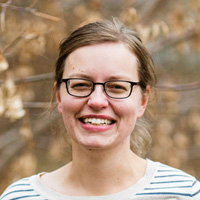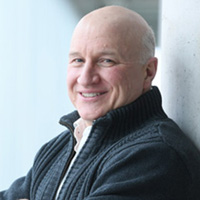Dal researchers are the recipients of close to $600,000 in funding that will help acquire cutting-edge tools they need to conduct world-class research. The funding for these projects is part of a $77 million investment to support 332 research infrastructure projects at 50 institutions across Canada.
The funds, which are provided through the ’s (CFI) John R. Evans Leaders Fund (JELF), are designed to help universities attract and retain the best and brightest researchers from around the world.
“Our researchers have always thought big,” says the Honourable Francois-Philippe Champagne, Minister of Innovation, Science and Industry. “Now, more than ever, they need state-of-the-art labs and equipment to turn their visions into reality. Investing in our university research infrastructure is key to our continuing role as an innovation leader in wide-ranging fields, from Indigenous research to quantum computing, from neurobiology to advanced robotics. These investments will not only support our ground-breaking contributions to science and research but also improve our economy, environment and quality of life.”
“From developing sustainable building materials to creating new laboratories based on Indigenous principles and community engagement, these awards support essential and urgent research,” says Roseann O’Reilly Runte, President and CEO, Canada Foundation for Innovation. “With the necessary spaces and tools, Canada’s researchers will play a meaningful role on the global stage and contribute significantly to the quality of life today and for generations to come.”
AV���ֲ� project highlights
��
Alison Scott, Faculty of Engineering
Structure-Property Relationships of Water-Soluble Polymers: Innovative Designed Materials for Custom Applications
 Water-soluble polymers are long-chain molecules that dissolve or swell in water. The variety of synthetic water-soluble polymers available has led to their use in diverse applications and industries, from pharmaceuticals and personal care products to water treatment and enhanced oil recovery.
Water-soluble polymers are long-chain molecules that dissolve or swell in water. The variety of synthetic water-soluble polymers available has led to their use in diverse applications and industries, from pharmaceuticals and personal care products to water treatment and enhanced oil recovery.
While many of the materials used for these (and other) applications have been selected using trial and error techniques, this project aims to design polymeric materials with targeted desirable properties. Using a recently developed design approach, the research team will ensure that the polymer product is optimized for each application, which means that these customized materials will improve performance, productivity and efficiency while at the same time reducing costs, energy consumption and waste.
Drew Weatherhead, Faculty of Science
The neural and cognitive mechanisms of infants’ word representations: the role of variability
 Multiculturalism is a cornerstone of Canadian society. As a result, children today are learning language in a far more socially and linguistically diverse environment than ever before. However, existing models of language acquisition do not account for speaker diversity. In fact, linguistic variations like accent, or social variations like race, are currently thought to be ignored entirely by young language learners.
Multiculturalism is a cornerstone of Canadian society. As a result, children today are learning language in a far more socially and linguistically diverse environment than ever before. However, existing models of language acquisition do not account for speaker diversity. In fact, linguistic variations like accent, or social variations like race, are currently thought to be ignored entirely by young language learners.
This project proposes a new model and will determine how infants’ word processing is influenced by speaker diversity and will characterize the nature of infants’ emerging word presentations. This work will have broad appeal to educators, practitioners, and policy makers. The results can be integrated into educational curricula or applied to targeted strategies and interventions intended to lessen the symptoms of language acquisition disorders.
Jeff Dahn, Faculty of Science
Advanced batteries for electric vehicle and grid energy storage options
 Lithium-ion battery cells are key to current and future energy storage. These batteries have many advantages over past technologies, however, they still need to be improved. The goals of this project include: lowering the costs of batteries for electric vehicle and electrical energy storage applications, increasing battery lifetime, increasing the energy density of batteries, and increasing the content of sustainable material in the batteries. One further goal is to maintain or improve battery safety. Lithium-ion batteries have an excellent safety record, but fires do occur from time to time. Although rare, it is extremely important to reduce this hazard.
Lithium-ion battery cells are key to current and future energy storage. These batteries have many advantages over past technologies, however, they still need to be improved. The goals of this project include: lowering the costs of batteries for electric vehicle and electrical energy storage applications, increasing battery lifetime, increasing the energy density of batteries, and increasing the content of sustainable material in the batteries. One further goal is to maintain or improve battery safety. Lithium-ion batteries have an excellent safety record, but fires do occur from time to time. Although rare, it is extremely important to reduce this hazard.
Achieving these goals will make electric vehicles and renewable energy more accessible and more affordable for all Canadians.
Manuel Helbig, Faculty of Science
An integrated atmospheric boundary layer observatory to diagnose land-atmosphere interactions
 This research aims to advance the understanding of heatwave and drought development and to improve predictions of these extreme events, particularly those where heatwaves and droughts occur simultaneously. Such events can have far-reaching consequences for human health, resource economies and the environment.
This research aims to advance the understanding of heatwave and drought development and to improve predictions of these extreme events, particularly those where heatwaves and droughts occur simultaneously. Such events can have far-reaching consequences for human health, resource economies and the environment.
The establishment of a long-term integrated land-atmosphere observatory will provide crucial data across the soil-vegetation-atmosphere continuum in a typical forest landscape of Eastern Canada. By combining observations with land-atmosphere modelling, the observatory will quantify the contributions of land-atmosphere feedbacks to heatwave and drought development in a warming climate. The results will provide crucial information to policy makers and land managers on how land use and management can help mitigate heatwaves and droughts in a warming climate.
Michael Metzger, Faculty of Science
Multi-channel on-line electrochemical mass spectrometry (multi-OEMS) for advanced battery research
 The mission of Dr. Metzger’s research team is to bring the world closer to a future with sustainable energy, mobility and water. To do this they study high-energy lithium-ion batteries, develop long-lived lithium metal batteries and create novel devices for energy-efficient water desalination.
The mission of Dr. Metzger’s research team is to bring the world closer to a future with sustainable energy, mobility and water. To do this they study high-energy lithium-ion batteries, develop long-lived lithium metal batteries and create novel devices for energy-efficient water desalination.
To enable these technologies, they set out to construct the world’s first multi-channel On-line Electrochemical Mass Spectrometry instrument. This instrument will be the cornerstone of their research operation and represents a multi-purpose, high-end gas analysis platform for electrochemical systems. The custom design will allow extraction of small gas quantities and real-time analysis of gases generated during charge and discharging of advanced battery cells.
For more information on the Canada Foundation for Innovation, .

